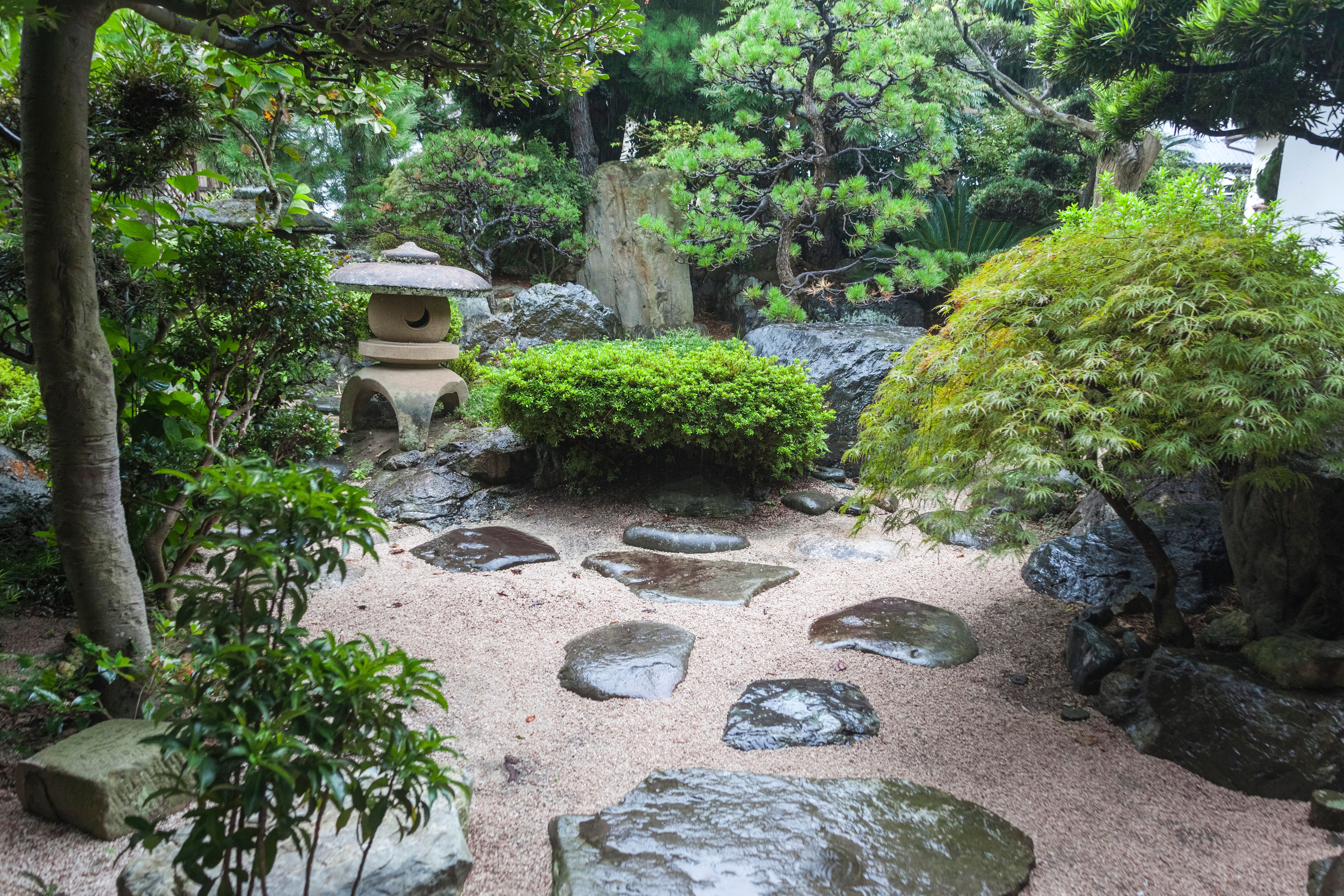Creating a zen garden in your yard can be a great way to bring a sense of peace and relaxation to your home and outdoors. If a zen garden is your style, it can be a setting to help free your mind and reduce stress or anxiety.
You don’t need a large space to create a zen garden. In fact, just browse Pinterest and you will see plenty of mini zen garden ideas, even small zen garden bowls to place on your office desk or a small table to admire.
If you are lucky enough to have a space in your yard to create a zen garden, it can be a great place for quiet contemplation and relatively easy to create.
While there are many ways to create a zen garden, there are some basic elements that will help bring the essence of a zen garden to life.
First let’s dig into more about these tranquil spaces!

What’s a Zen Garden?
Zen gardens or Japanese rock gardens, are a garden design created by Buddhist monks in the sixth century for mediation.
These gardens were used as a place to teach zen principles and concepts. While the gardens have evolved and changed through the years, many of the basic principles remain the same.
Today, zen gardens are a very recognizable feature of Japanese culture.
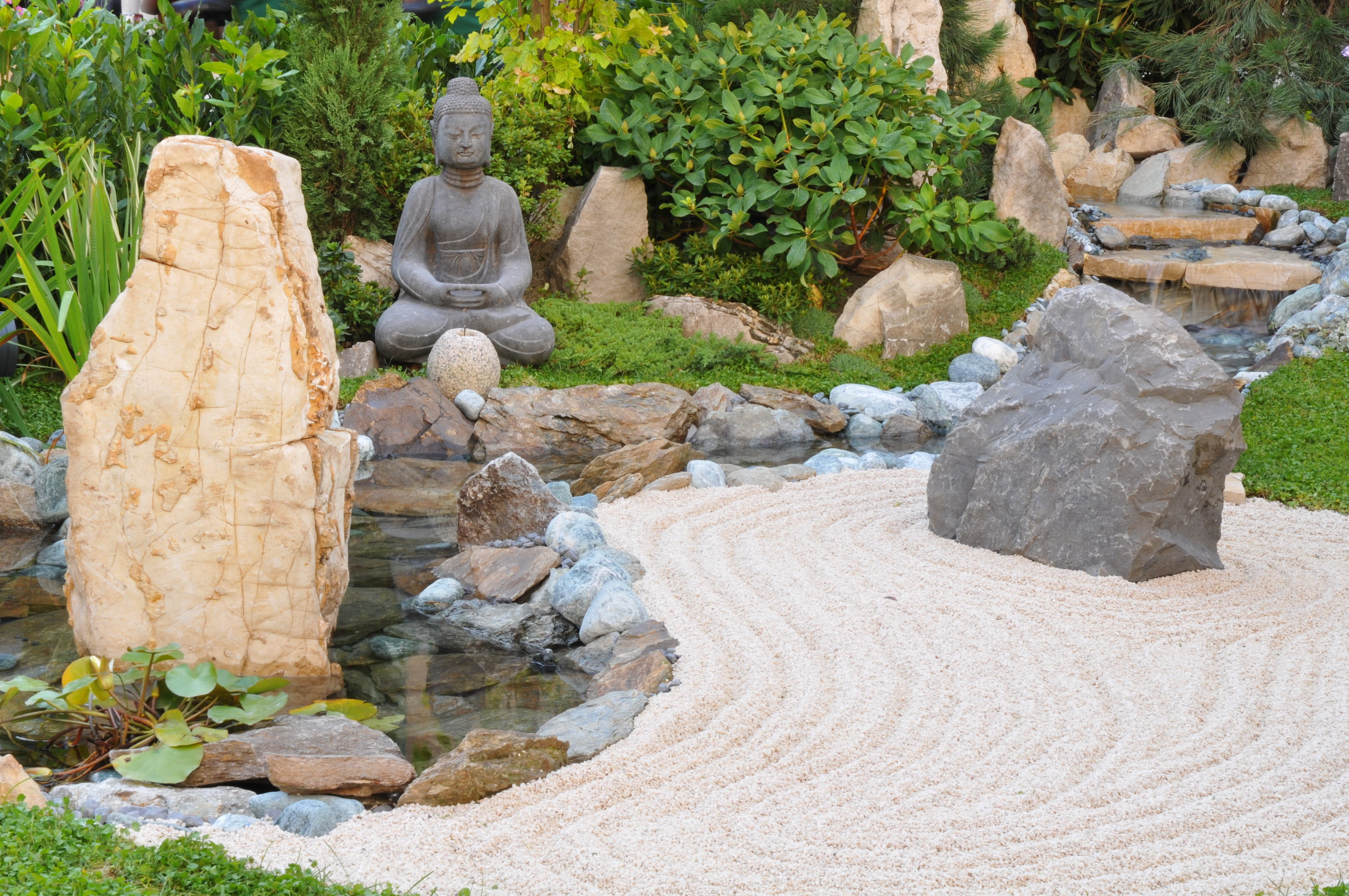
Types of Japanese Gardens
Traditional Japanese gardens can be categorized into three types; tsukiyama (hill gardens), chaniwa gardens (tea gardens), and karesansui (dry gardens).
There are three main elements to a Japanese garden. These include stone, which create the structure of the landscape and garden area; water, which represents the life-giving force; and plants, which provide the color and changes throughout the seasons.
Dry gardens are the zen gardens we are discussing in this article, but below is a quick overview of each garden type.
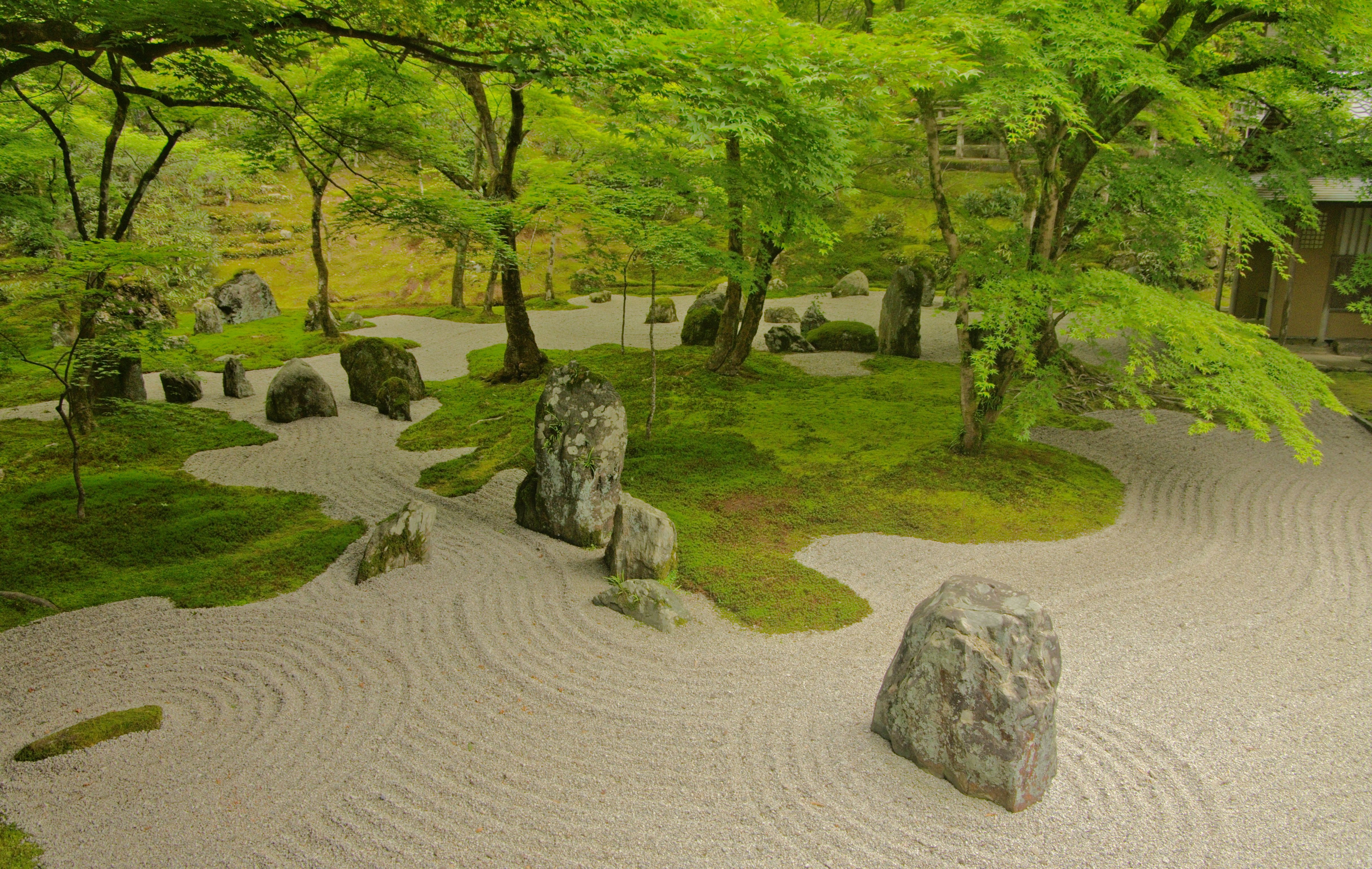
Tsukiuama Garden, Hill Gardens
A Tsukiuama Garden is a Japanese garden style characterized by man made hills and miniature nature scenes. Hills, ponds, streams, stones, bridges, flowers, plants and long winding paths can all be found in a Hill Garden, with the aim to facilitate a peaceful stroll.
Chaniwa Gardens, Tea Garden
A Chaniwa garden is built for holding tea ceremonies. There should be a traditional tea house as its centerpiece and the most prominent feature. The hut (tea house) and garden generally has a very simple path leading to the house.
Karesansui Garden, Dry Garden
A karesansui garden is a type of Japanese dry landscape garden, also known as a Zen garden. It is is composed of natural elements, including gravel, rocks, and other hardscapes such as sand and wood, to create a tranquil and peaceful atmosphere. The gardens are meant to be enjoyed from afar and are meant to inspire mindfulness and contemplation.
Man-made components include accessories such as bridges, statues and lanterns. There is generally an enclosing wall or fence to separate the garden from the outside environment.

What are the rules of a Zen Garden?
Zen gardens are structured around seven guiding principles, they include:
- Austerity (Koko)
- Simplicity (Kanso)
- Naturalness (Shinzen)
- Asymmetry (Fukinsei)
- Mystery or Subtlety (Yugen)
- Magical or Unconventional (Datsuzoku)
- Stillness (Seijaku)
The best part about it? Zen gardens are relatively simple. Read on for some simple tips on how to create a zen garden in your space – no matter the size of your yard!
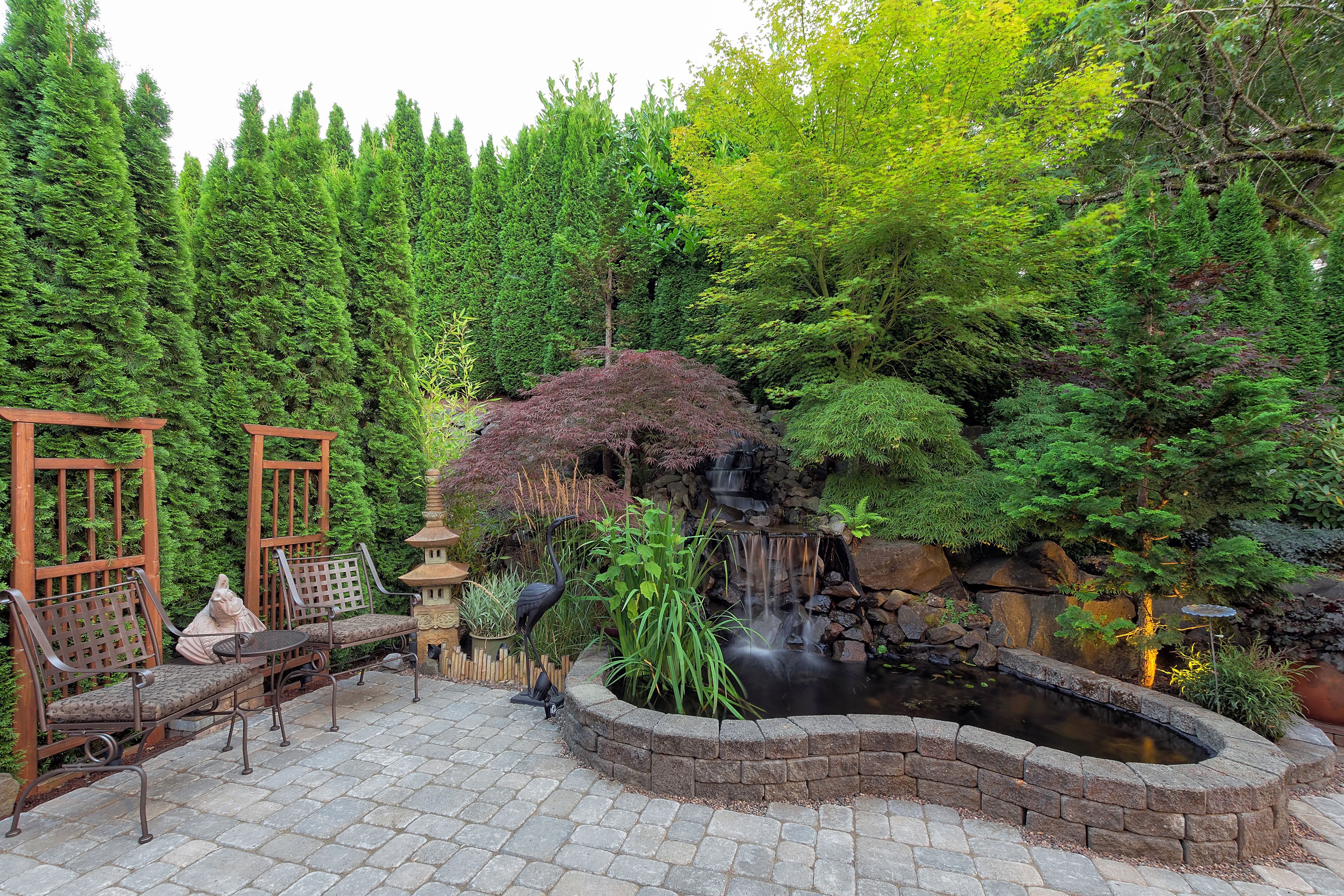
Choose a space
To create your zen garden, you will need to decide on the perfect space. You can use a balcony, terrace, or even just a corner of your backyard. This can be a very small space or a devoted section of a larger backyard.
It’s important to make sure the location is in a spot where you can enjoy your garden and have easy access to it. As with many things in life, if you don’t have easy access your location may not get as much use as you want it to.
Consider the amount of sunlight the area receives since this will affect the types of plants you can include in your garden. Note that a traditional zen garden generally does not include many plants. However, we often have clients that want to include plants – and this is your garden so you an go with your rules!
Determine Your Materials
You don’t need to invest in expensive materials to create a zen garden and a tranquil atmosphere.
Below are key elements that will help you achieve a zen garden look.
River Stones
Stones are the anchor of a zen garden. Place stones in balanced groupings to create a sense harmony in your garden. The placement does not need to be and should not be symmetrical. This is because the goal of a zen garden is to reflect a natural landscape.
In the US, we traditionally focus on symmetry and even number placements (groups of 2), especially in a classic or formal design. However, Japanese gardens will often use odd numbers, which creates a more informal and natural look.
Flat Stones
Mix and match the types of stones and the sizes of stones you use. Stones are an intricate part of a zen garden and create the structure of the garden. You can create multiple garden design focal points by having different groups of rocks and stones.
Rocks
Rocks are a great way to establish a zen garden feel. You can incorporate a variety of large rocks or boulders and make them a garden edge or a focal point of your backyard zen garden. Rocks are also a great idea to establish seating areas to view a zen garden.
Pebbles
You can place pebbles around the other size rocks for dimension and variety. You can also have small piles of pebbles as another focal point. Varying the sizes of materials you use will add to the dimension and interest to your space.
Sand
Sand is an important part of zen gardens and it’s easy to understand why! When you visualize a zen garden, many people picture raked sand in circular formations. You can purchase a small rake and create different shapes and motions in your garden.
Moss
Moss is a beautiful addition to a zen garden. It lends a feeling of antiquity and harmony to the space. It’s a nice way to create a cohesive look between your rocks and earth and can center any trees you have in the design. Moss absorbs sound and exhales moisture, which helps create that inner peace vibe you are going for.

Personalize Your Garden
Make your garden your own by adding items that are meaningful and relaxing to you. This can be anything from a wind chime to a Buddha statue. You can play with the colors that speak to you most, but in general a muted color schemes are a good start to create a beautiful zen garden feel.
Adding soft landscape lighting, such as stone lanterns or uplighting of rocks are other great zen garden ideas.
Depending on size, incorporate pathways throughout your space. A gravel or stone pathway can be the perfect finishing touch to a design.
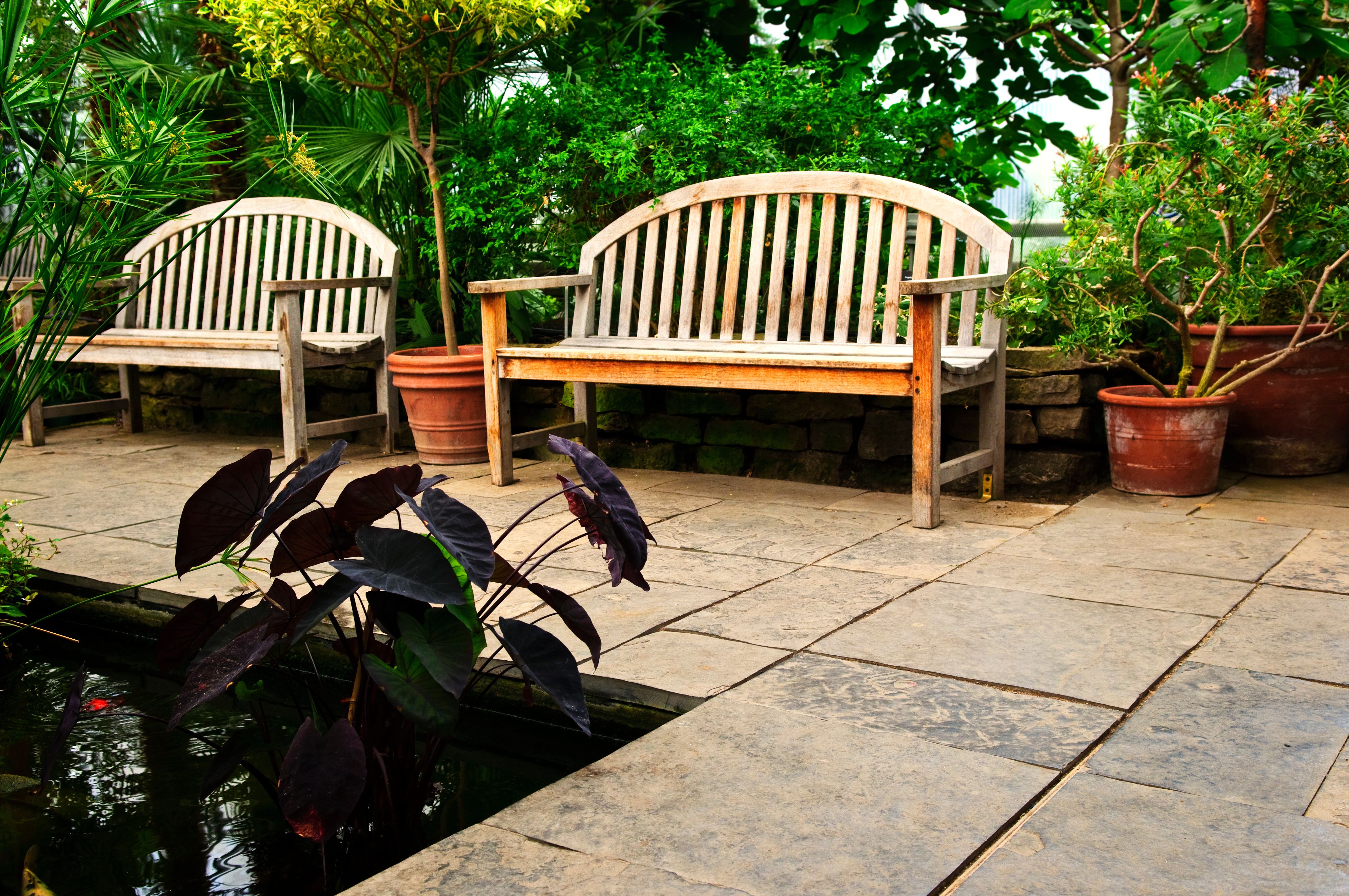
Incorporate a Water Feature
While traditional zen gardens do not include water, we find that many of our clients like incorporating this feature. And hey, it’s your garden!
Flowing water such as a bubbling fountain or a small pond can be a great way to add a peaceful sound to your garden. Add some koi fish (if you are in an appropriate climate) and a mini waterfall through river rocks for the ultimate relaxing space.
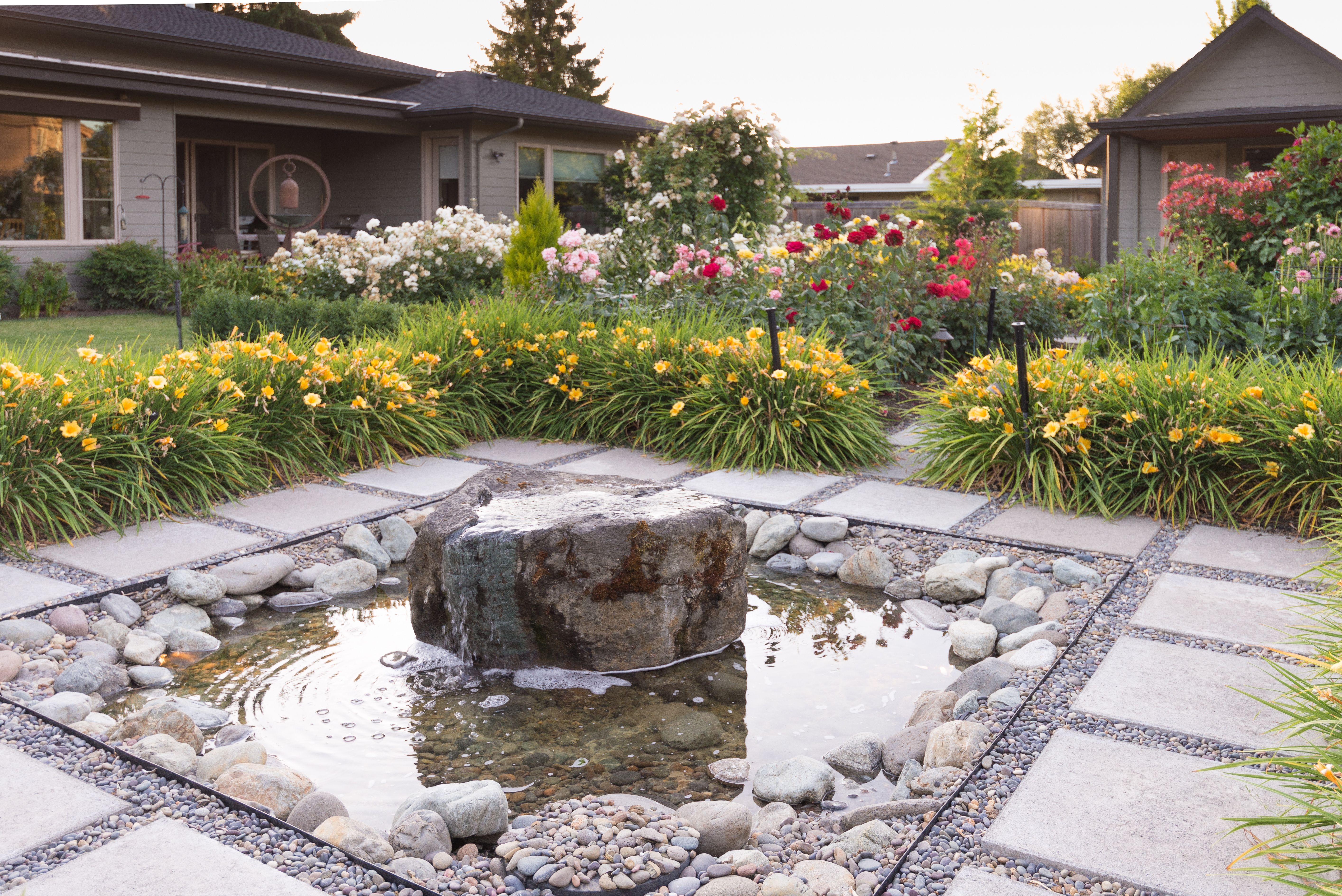
Zen Garden Plants
Plants are very scarce in a traditional zen garden. However, if you are interested in incorporating trees in your space, there are a variety of plants are a great option to invoke a Japanese garden feel.
Cherry Tree
Sakura, cherry blossoms, symbolize both birth and death, beauty and violence. Cherry trees are a prominent symbol and motif in a Japanese garden and nature. The blooming flowers on a cherry tree are short lived, but beautiful! They can be the perfect element in a Japanese style garden to create a serene space.
Japanese Maple
In Japan and abroad, the Japanese maple tree is a symbol of elegance, beauty, and grace. The turning of colors on the trees is an event that tourists from all over the world flock to Japan to witness each year!
Bonsai Trees
Bonsai trees symbolize harmony, balance, patience, and luck. These trees are often found potted inside as well.
As with any tree options, make sure whatever you are selecting fits your garden size. You don’t want to create a design that is out of balance.
Bamboo
Bamboo is a great addition for privacy screening in a zen garden. However, remember that there are some variations of bamboo that can be extremely invasive. If you are using invasive bamboo it’s best to keep it in a contained area, such as a concrete planter.
A bamboo screen in a concrete planter is a perfect way to keep your bamboo under control.
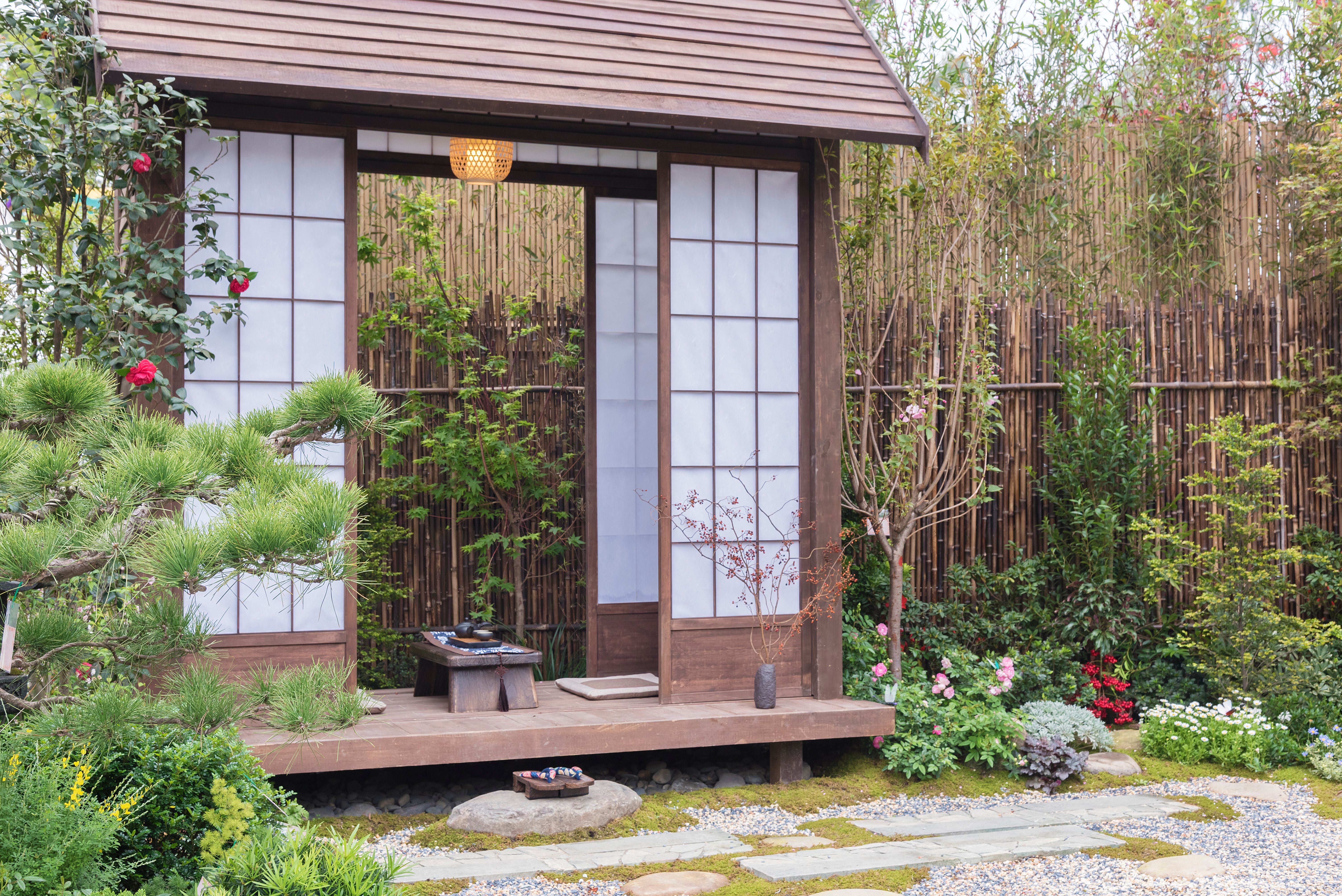
Create a Space with a Purpose
Think about how you want to use your space before you design it. Is it a quiet meditation spot and you’d like it to be tucked in a secluded spot or corner of your backyard? Consider if it’s for viewing or for relaxing in.
How do I create a zen garden on a budget?
There are many ways to create a thoughtful garden on a budget. Start by using things you may have access to in your yard. Do you have existing water features you can work with? Is there a mini garden space that can transition? Do you have existing rocks or gravel that can be worked into your landscape? When it comes to other elements you are adding to your space, take your time collecting things that are meaningful to you.
Other garden on a budget ideas include focusing on small shrubs that can grow over time. Buying larger plants is more expensive, but with a little patience small shrubs will grow in no time. Some gardeners even prefer starting with smaller plants as they feel the plants adapt to the climate better if they start younger.
If you have limited space, don’t be afraid to start with what you have! You’d be surprised the effect a thoughtful and well laid out space can have on your psyche.
No matter the size of your zen garden we hope it’s a great way to step away from the hustle and bustle of life!
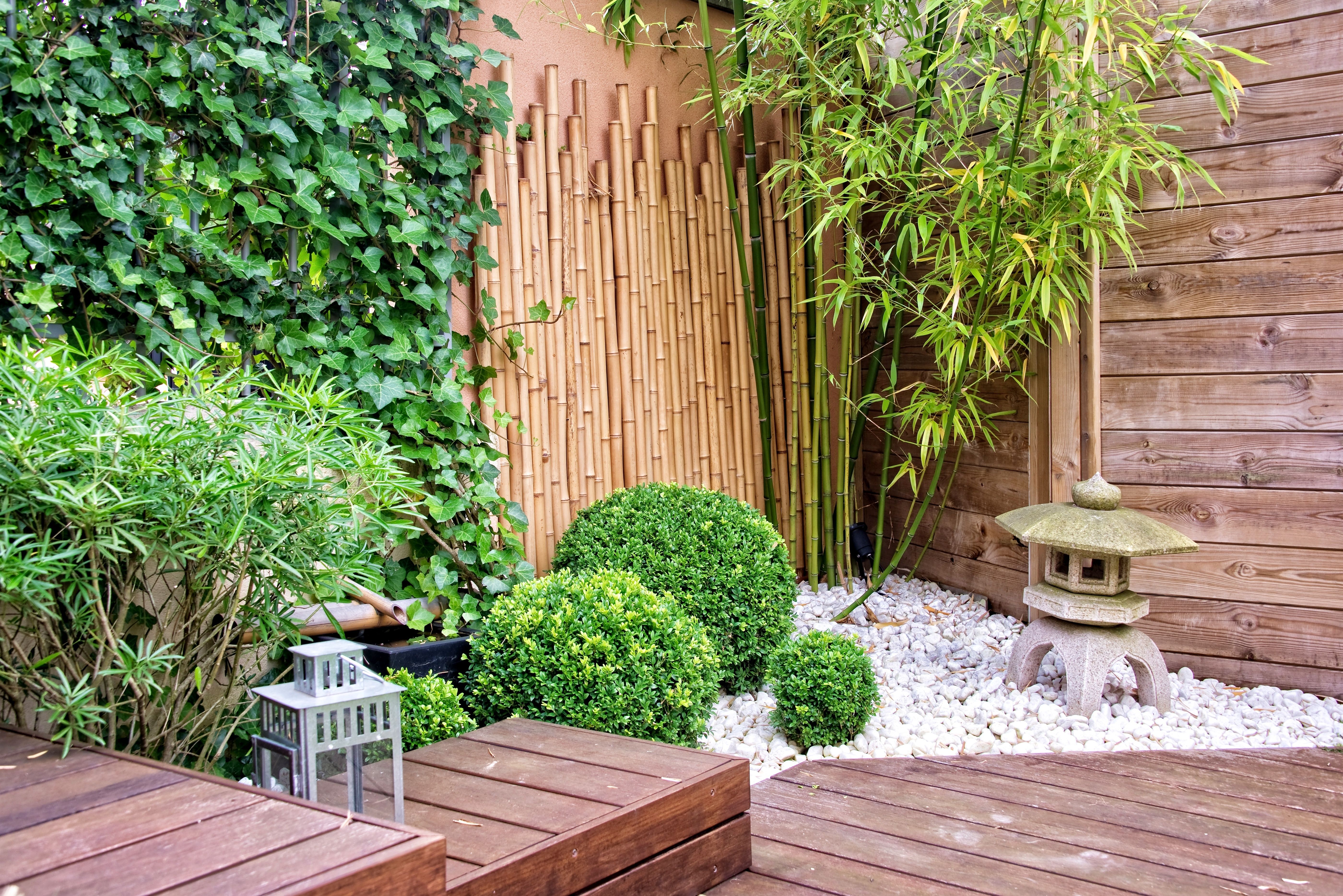
More on Tilly
Tilly’s easy online landscape design process has been embraced by homeowners across the country and in Canada. From Texas, Florida, Colorado to Illinois – we have a team for you! Tilly designs front yards, backyard or your entire property. We match you with a professional landscape designer who is familiar with your region.
To start our process you’ll fill out a questionnaire about your property that helps our design team understand your goals, needs and existing landscape. You can add 3d renders, lighting plans or side yards to your design package. You’ll then connect with your designer on a video call to meet them, show them your space and talk about your priorities.
When you receive your design you will be able to purchase your plants at a discounted rate through our team of plant experts and have them delivered directly to your curb. Tilly can also provide recommendations of local installers who can help you complete your landscape project.
We can’t wait to help you tackle your next yard project!
